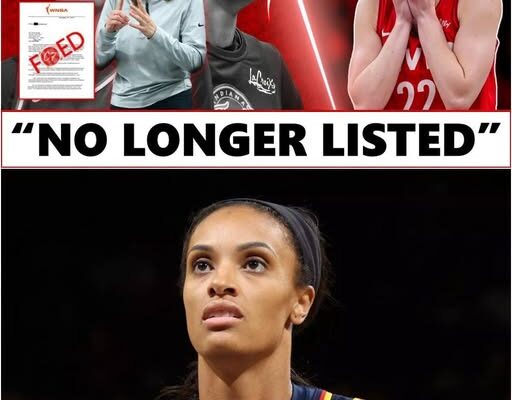DeWanna Bonner—a six‑time All‑Star, two‑time WNBA champion, and league legend—arrived in Indianapolis on February 5, 2025, reuniting with coach Stephanie White and GM Amber CoxShe inked a one‑year deal worth about $200,000 (unprotected), fulfilling the Fever’s ambition to add veteran scoring and leadership
Analysts—like Rebecca Lobo and Rob Andrew Lo—highlighted Indiana’s revitalized title aspirations. Lobo remarked Bonner “vaults Fever into WNBA championship conversation” , while Sportskeeda cited three key reasons Indiana could be favorites, with Bonner being a centerpiece.
Pairing Bonner and Natasha Howard (another multi‑champion), alongside Sophie Cunningham and rising stars Caitlin Clark, Aliyah Boston, and Kelsey Mitchell, the team merged playoff savvy with youthful talent ().Clark herself praised the moves, noting the Fever had “put really good pieces together that are going to complement each other really, really well”
Bonner immediately solidified her status as the franchise’s third all-time leading scorer, surpassing Tina Thompson .She started the first three games of the season before rotating more often and spending time on the bench—making way for Lexie Hull .
Through nine appearances, Bonner averaged a modest 7.1 PPG, 3.8 RPG, and 1.6 APG—significantly below her career norms (Critics noted underwhelming results, while internal frustration surfaced as she was benched to facilitate roster chemistry .After June 10’s loss to Atlanta, Bonner stepped away citing “personal reasons” Fan outrage followed her non-return, with even Caitlin Clark superfan Dave Portnoy branding her “beyond useless” By June 24, 2025, reports revealed she “had no interest in returning to play for the Fever”
Bonner’s deal included no trade protections, meaning Indiana could waive or trade her without restriction.She’s eligible for unrestricted free agency after a 48-hour waiver window if the team moves on
Her departure likely voids, leaving the team without both her veteran presence and roster cap flexibility.Lexie Hull’s emergence, along with players like Cunningham and McDonald, helps fill the void—but losing Bonner’s depth hurts.
The Fever snapped their slump, beating Seattle 94‑86—Hull stepped up, and Clark outperformed despite her shooting woes .Clark’s 8.9 APG (but also 5.6 TOs) reflect growth and challenge the team needs to manage
Lexie Hull is establishing chemistry with backcourt leaders Clark and Cunningham (“Tres Leches”) (nypost.com).Sophie’s role remains strong; teammates and coaches view her as foundational .Aari McDonald was even signed under hardship when injuries depleted guard depth
As of press time, Indiana sits at 7‑7 in the Eastern Conference, ousting streaks but grappling with inconsistency .Despite roster disruptions, hosting the 2025 All-Star weekend marks franchise growth and appeal .
Preseason projections placed Indiana among the top-tier contenders—bookies still rate them highly despite Bonner’s exit .However, momentum now hinges on internal chemistry: Canadian defense from Howard, scoring from Mitchell/Boston/Cunningham, and mitigating turnovers from Clark.
With ~$200K freed, Indiana could pursue bench upgrades, backup guard support, or frontcourt depth.They may hold on to Bonner via waiver, hoping another team claims her, or trade her away for roster assets.
The Fever’s strategy now balances between veteran scoring (Bonner), defense (Howard), sharpshooting (Cunningham, Mitchell), and youthful energy (Clark, Boston).Stephanie White’s coaching will face its biggest test: weaving them into a unified, resilient unit.
WNBA icon Sheryl Swoopes praised Indiana: “They put the pieces together… I’m excited to see what they’re going todo”).Despite Bonner’s midseason withdrawal, earlier sentiment was strong: observers defined Fever as “win‑now.The Bonner saga highlights the challenge of blending seasoned stars with developing teams—expectations vs. reality can collide.Indiana’s future free agency moves will need careful integration planning and adaptability.
The heavy emphasis on Caitlin Clark shows a long-term blueprint: build around a transcendent talent.Supporting her with compatible wings and defensive rebounding keeps Clark’s growth trajectory the priority
Bonner’s exit frees cap space and a roster spot—this could be a blessing disguised as turmoil if used smartly.The front office should remain opportunistic: lower-cost veterans, unsung role players, or even a trade horizon for rebounding intensity.
The Fever’s midseason divorce from DeWanna Bonner is a seismic moment—a stunning pivot that defies initial expectations. It’s a tale spanning optimism, disappointment, backlash, and strategic adjustment.
What went wrong? A veteran who expected a starting role was moved to the bench, struggled statistically, and exited abruptly.How does Indiana respond? They’re leaning into their young core, unlocking fresh opportunities for Hull, Cunningham, and McDonald to contribute.Can they recover? Absolutely—but it demands tight locker-room spin, smart roster moves, and steady coaching.
With Caitlin Clark’s meteoric rise, increased national attention, and a more stable roster, Indiana’s future remains bright—just not in the way they planned on February 5th. Instead of being Bonner’s team, it’s becoming Her team.
Watch how the Fever fill that $200K salary cap hole.See if veteran leadership emerges from the locker room.
Monitor Clark’s assist-to-turnover evolution—it could be the key to playoff success.
Given the Fever host Los Angeles Sparks this week, the next few games may define whether this “bonfire” becomes a driving blaze or smoldering regret.



